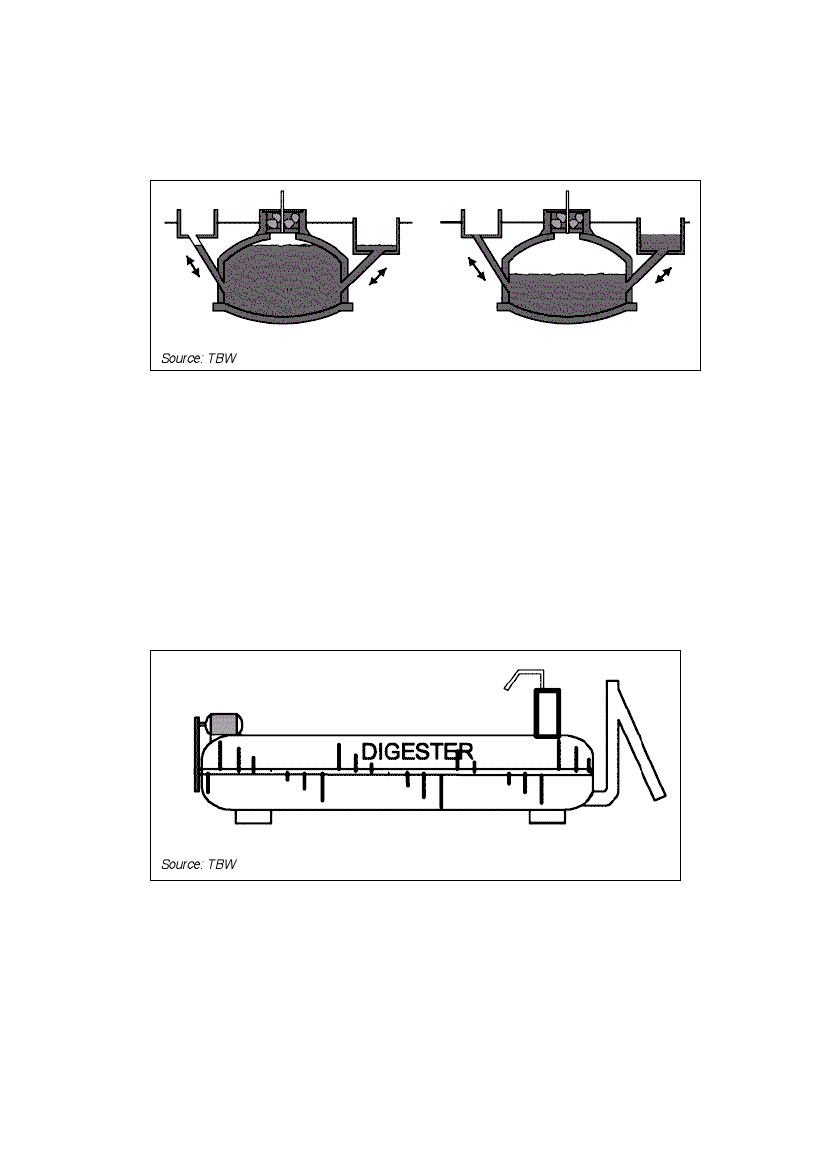
Mixing through inherent flow
In fixed dome plants, frequently found in developing countries, a certain mixing of the
substrate is provided by the substrate being pushed up in the compensation tank with gas
accumulation. When the stored gas is used, the substrate flows back into the digester.
Figure 33: Mixing of substrate through inherent flow in fixed-dome plants
Source: TBW
The company "VSP-Anlagen" further developed and patented this principle:
Through the pressure of the biogas, the substrate is pushed from the main digester into the
subsidiary digester, resulting in a difference of levels between the two digesters. By reaching
a certain difference in levels, a gas valve opens between main and subsidiary digester which
equalizes the height difference. The flow-back of the substrate is guided in a way that
destroys sinking and swimming layers.
Mechanical paddle rotor
Mechanical paddle rotors are predominantly used in horizontal steel vessels. A horizontal
shaft in hardwood bearings runs through the whole vessel. Attached are paddles or loop-
shaped pipes. By turning the shaft the vessel contents are mixed, the swimming layer is
broken up and sediments are pushed towards a drainage opening. The loop-shaped pipes
can also be used as heat exchangers to warm up the substrate.
Figure 34: Mechanical paddle rotor
Source: TBW
Submerged motor with rotor stirring
A sealed, submerged electric engine directly drives a rotor. The rotor mixes the substrate by
creating a strong current. These stirring devices can usually be adjusted in height and in
angle.
56